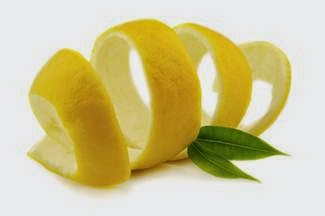Did you know that lemon peel contains 5 to 10 more vitamins than the lemon juice itself?
The lemon zest (the yellow part of the peel, not the white pith that is bitter) is the most flavourful part of the lemon.The zest contains the essential oils of the lemon, which represents concentrated citrusy flavour. In fresh or even dried form, lemon zest can bring brightness to any dish.The same characteristics apply to the zests of orange, lime, and grapefruit, but lemon zest is the most widely used.
The lemon zest (the yellow part of the peel, not the white pith that is bitter) is the most flavourful part of the lemon.The zest contains the essential oils of the lemon, which represents concentrated citrusy flavour. In fresh or even dried form, lemon zest can bring brightness to any dish.The same characteristics apply to the zests of orange, lime, and grapefruit, but lemon zest is the most widely used.
Add some lemon peels along windowsills, on thresholds and near any cracks
or holes where ants or pests may be entering. Many pests are repelled by the acid in
lemons, so this would work great, you should try it!
2. Use on your skin
Lemon peels can be very lightly rubbed on your face for a nice skin tonic,
then rinse with lukewarm water. But be very careful around your eyes.
3. Keep brown sugar soft
Adding some lemon peel (with traces of pulp and pith removed) to your
brown sugar can help keep it moist and easy to use.
4. Firelighters
Bake discarded lemon peels until they darken. These create natural,
fragrant firelighters.
5. Whitener and Stronger Nails
Whiten and strengthen fingernails by rubbing with a lemon wedge every
night before bed time.
6. Clean a stainless sink
Use a lemon wedge to clean any stainless
sink.
7. Freshen your Fridge
Place a lemon peel inside your fridge to absorb smells and bring a bright
citrus scent.
This works great because lemon peel has amazing absorption power.
8. Add to meals
Grated lemon peel makes a great addition to salads. In fact they add amazing flavour to any meal!
Grind the lemon peel from a frozen lemon and add the lemon peel pieces on your meals or in your drinks.
Lemon zest is a great addition in both sweet and savoury dishes. Zest some of your peel on your juice, salad or any dish.
Grind the lemon peel from a frozen lemon and add the lemon peel pieces on your meals or in your drinks.
Lemon zest is a great addition in both sweet and savoury dishes. Zest some of your peel on your juice, salad or any dish.

No comments:
Post a Comment
Please leave a comment!
Your feedback is much appreciated :)